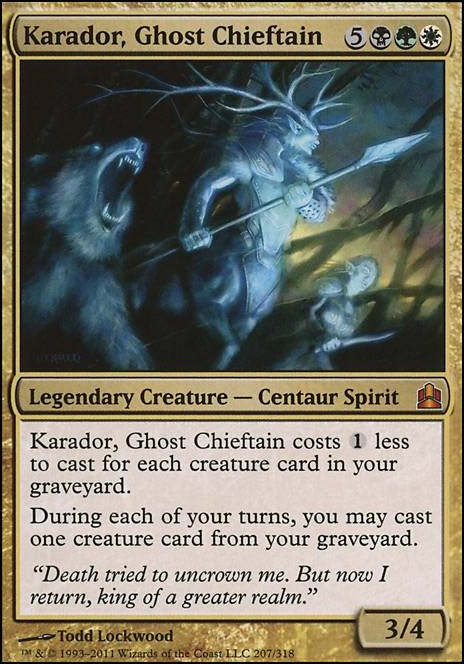Creature (44)
-
1x
Acidic Slime

- 1x Angel of Serenity
- 1x Archon of Justice
- 1x Ashen Rider
- 1x Avenger of Zendikar
- 1x Bane of Progress
- 1x Blood Artist
- 1x Bone Shredder
- 1x Butcher of Malakir
- 1x Disciple of Bolas
-
1x
Dryad of the Ilysian Grove
 *f-pre*
*f-pre*
- 1x Elvish Rejuvenator
- 1x Eternal Witness
- 1x Farhaven Elf
- 1x Fauna Shaman
- 1x Gray Merchant of Asphodel
- 1x Grim Haruspex
- 1x Karmic Guide
- 1x Knight of Autumn
- 1x Kokusho, the Evening Star
- 1x Krav, the Unredeemed
- 1x Massacre Wurm
-
1x
Merciless Executioner

- 1x Meren of Clan Nel Toth
- 1x Mikaeus, the Unhallowed
- 1x Plaguecrafter
- 1x Qasali Pridemage
- 1x Razaketh, the Foulblooded
- 1x Reveillark
-
1x
Rune-Scarred Demon

- 1x Saffi Eriksdotter
- 1x Sakura-Tribe Elder
- 1x Shalai, Voice of Plenty
-
1x
Sheoldred, Whispering One

- 1x Sidisi, Undead Vizier
- 1x Solemn Simulacrum
- 1x Spore Frog
- 1x Springbloom Druid
- 1x Sun Titan
- 1x Viscera Seer
- 1x Wood Elves
- 1x Yahenni, Undying Partisan
- 1x Yosei, the Morning Star
- 1x Zulaport Cutthroat
Land (37)
- 1x Bojuka Bog
- 1x Canopy Vista
- 1x Command Tower
-
1x
Evolving Wilds

- 1x Flooded Strand
- 6x Forest
- 1x Grim Backwoods
- 1x High Market
- 1x Overgrown Tomb
- 6x Plains
- 1x Polluted Delta
- 1x Reliquary Tower
- 7x Swamp
- 1x Temple Garden
- 1x Temple of Malady
- 1x Temple of Plenty
- 1x Temple of Silence
- 1x Terramorphic Expanse
- 1x Urborg, Tomb of Yawgmoth
- 1x Westvale Abbey Flip
-
1x
Windswept Heath

Artifact (5)
Commander (1)
Sorcery (8)
-
1x
Buried Alive

- 1x Decree of Pain
- 1x Diabolic Intent
- 1x Jarad's Orders
- 1x Living Death
- 1x Reanimate
- 1x Rise of the Dark Realms
- 1x Victimize
Enchantment (5)
Maybeboard
Creature (6)
Sorcery (2)
Suggestions
Updates Add
Comments View Archive
Attention! Complete Comment Tutorial! This annoying message will go away once you do!
Important! Formatting tips — Comment Tutorial — markdown syntax
Please login to comment
Casual
93% Competitive
| Date added | 7 years |
| Last updated | 3 years |
| Exclude colors | UR |
| Legality | This deck is Commander / EDH legal. |
| Rarity (main - side) | 10 - 0 Mythic Rares 42 - 0 Rares 14 - 0 Uncommons 13 - 0 Commons |
| Cards | 100 |
| Avg. CMC | 4.11 |
| Tokens | Experience Token, Human Cleric 1/1 BW, Morph 2/2 C, Plant 0/1 G |
| Folders | stuff, Fun Decks |
| Votes | |
| Ignored suggestions | |
| Shared with | |
| Views |

